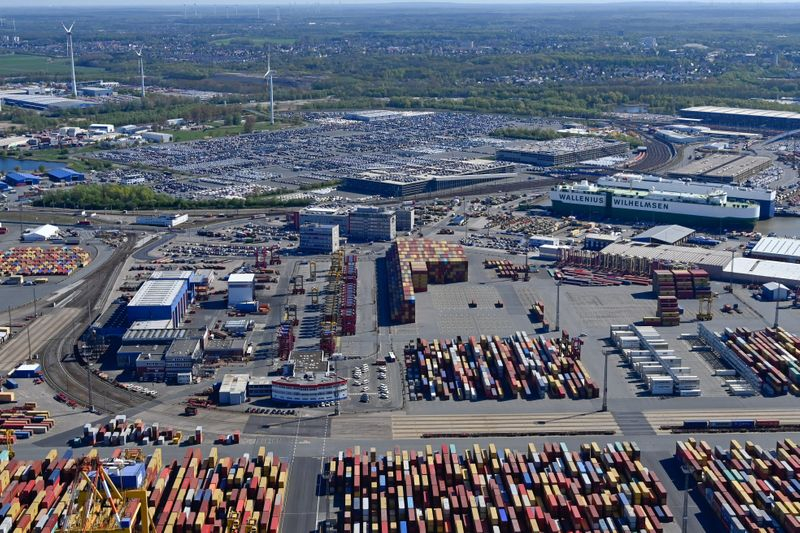German exports inch up, giving economy hope of avoiding fourth quarter slump

By Paul Carrel
BERLIN (Reuters) – German exports rose less than expected in October but foreign trade still gave Europe’s largest economy a boost at the start of the fourth quarter as it struggles to avoid slipping into a double-dip contraction.
Seasonally adjusted exports rose 0.8% on the month after an increase of 2.3% in September, the Federal Statistics Office said on Wednesday. Imports rose 0.3% after an upward revision in the prior month’s figure to an increase of 0.2%.
The trade surplus expanded to 18.2 billion euros ($22.07 billion).
Economists polled by Reuters had expected exports to rise by 1.2% and imports to increase by 1.0%. The trade surplus was predicted to come in at 18.0 billion euros.
“Despite the October slowing, the export sector remains one of the few hopes of the German economy to avoid a significant contraction in the fourth quarter,” said ING economist Carsten Brzeski.
“The longer-term outlook, however, remains very mixed, illustrating that the sector will not easily return to its former strength,” he added.
The trade figures chimed with data on Monday that showed industrial output surged in October, in a sign that the export-oriented manufacturing sector helped the economy get off to a solid start in the current quarter.
Sentiment surveys and high-frequency data such as truck toll mileage have also pointed to relatively strong manufacturing activity in November despite a partial lockdown imposed to slow a second wave of coronavirus infections.
The lockdown measures, which forced large parts of the services sector to close from Nov. 2, are clouding the outlook for the economy, which is expected to stagnate or even shrink in the final three months of the year.
German engineering group Siemens gave a cautious outlook last month on its recovery from the pandemic, saying it expects government and company investments next year to lag a global rebound in economic growth.
Exports to China rose by 0.3% in October from a year earlier, while those to the United States fell by 10.5% and those to the United Kingdom dropped 11.7%.
The German economy grew by 8.5% quarter-on-quarter from July through September after plunging 9.8% in the second quarter during the first wave of the COVID-19 pandemic.
The government has unleashed an unprecedented array of rescue and stimulus measures to help companies and consumers, including incentives to buy electric and hybrid cars.

